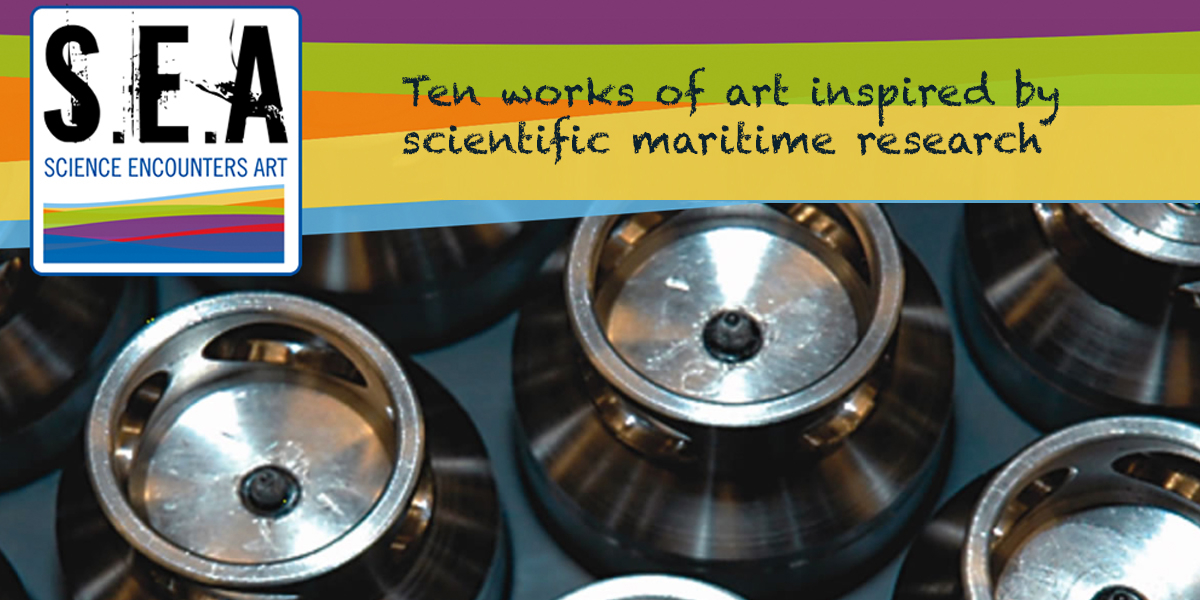Prof. Dr. Linda Amaral - Zettler
Living on a plastic planet
Marine microbiologist professor Linda Amaral-Zettler is fascinated by plastic, or rather: by the life that attaches to plastic. ‘Plastic probably has a far larger influence on our life than we think. An increasing amount of plastic waste is floating in the seas and ocean. You can see that when you walk along the high-water mark. If you examine such a piece of plastic from the beach carefully, then you can sometimes see that it is entirely covered by a layer of bacteria, algae and other living organisms. They have mainly seen an opportunity in that plastic; a surface to attach to. Just like the thin layer of life on the outside of the earth, which is called the biosphere, I see the layer of life on a piece of plastic as the plastisphere.’
Deserts in the ocean
‘The waste in the ocean is sometimes referred to as the “plastic soup”. It collects in large rotating swirls that are hundreds of kilometres in diameter. That soup is certainly not a thick, substantial soup, let alone a carpet of waste. However, our oceans definitely contain an awful lot of plastic! The ocean water at those locations is very poor in nutrients, and not much life is found there either. These locations are effectively deserts in the oceans. And so it is even more interesting that bacteria and algae inhabit the plastic. What attracts them to settle there? Together with my colleagues and students, I am trying to discover what the interaction is between plastic and microorganisms.’
Plastic transport
‘It could also be the case that the bacteria use plastic as a sort of raw material, although I do not believe they actually eat the intact polymer very efficiently. Microbes are not a solution for the plastic problem either. At the same time, those plastic objects might be a means of transport for microorganisms. There are indications that harmful algae, such as dinoflagellates or cyanobacteria, can be transported over thousands of kilometres on pieces of plastic. They could then reach locations that they would otherwise not have reached that easily. Also, bacteria that cause illnesses in aquaculture or on coral reefs, such as various vibrios, seem to be able to move via plastic. If this is true, then the plastisphere could have a far greater influence on marine life than we currently think.’
Read more +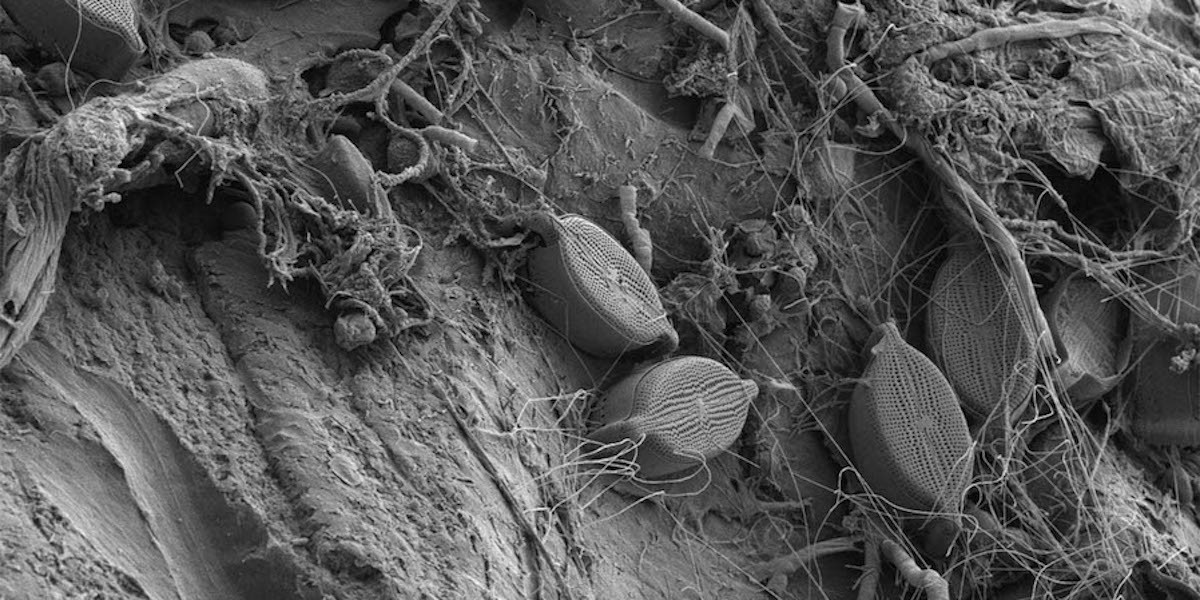
Microbial community assembly and function
Basic ecological questions that drive this research include: (1) How do diversity and function vary between natural and human impacted environments? (2) How are the bacterial, archaeal and eukaryotic communities linked to each other and to what extent do they interact at the gene level? (3) What role does history (order of species arrival) play in community assembly? This is a cross-cutting theme of my research that I have been pursuing in a variety of projects and site-based science locations including pH/heavy-metal extreme environments, the rapidly-warming waters off the western Antarctic Peninsula, microbial communities on plastic marine debris from around the world (what I have termed the "Plastisphere"), fish microbiomes, and anaerobic phototrophic microcosms derived from freshwater and marine environments. While much of this work has targeted "sun-lit" waters due to accessibility, much of my work in Spain's Rio Tinto and elsewhere has been with heterotrophs and chemoautotrophs, and I am equally fascinated with the dark ocean and applying some of these questions to this under-sampled marine biome.
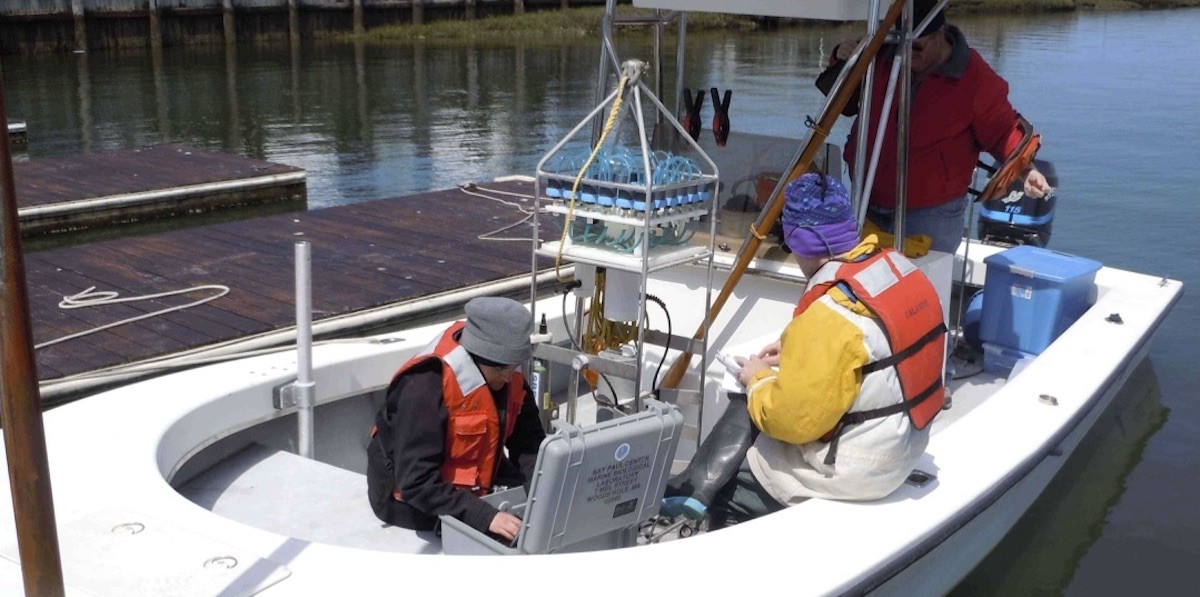
Microbes as sentinels of environmental change
This theme explores natural and anthropogenic changes and their impact on microbial biodiversity. Projects include the impact of flooding and sewage overflow due to storms, as well as other factors such as thermal pollution and temperature increases on microbial communities in rivers, lakes, and coastal waters. Another project is examining the connection between harmful algal bloom dynamics and bacterial diversity and succession patterns in coastal waters. Very fine scale sampling at different points along the bloom period using automated samplers, in combination with machine-learning algorithms is helping us determine whether microbial community diversity and structure pre-bloom can be modeled to help predict bloom onset or termination. Harmful algal blooms are an increasing problem worldwide and threaten marine food resources. In addition to the automated plankton samplers used in this study, I have also worked with instrument manufacturers to develop technology to allow fine scale in situ measurements within microbial biofilms.
Biodiversity and biogeography across the three domains of microbial life
This research has been on-going in my laboratory since my postdoctoral studies of pH extreme environments and has continued in a variety of site-based locations including coral reefs on the tropical island of Moorea in French Polynesia, local estuaries, globally-distributed open ocean sites, and the biotic and abiotic surfaces of macroalgae and microplastics in the sea. I employ both marker gene surveys and metagenomic assessments of microbial diversity using next-generation sequencing methodologies with an eye towards understanding larger scale biogeographic patterns and the mechanisms behind them. A recent addition to my biodiversity studies has been holopelagic species of the brown alga Sargassum and its associated communities. My lab is developing population genomic markers with which to study recent strandings of these floating ecosystems in the Caribbean and most recently Brazil.
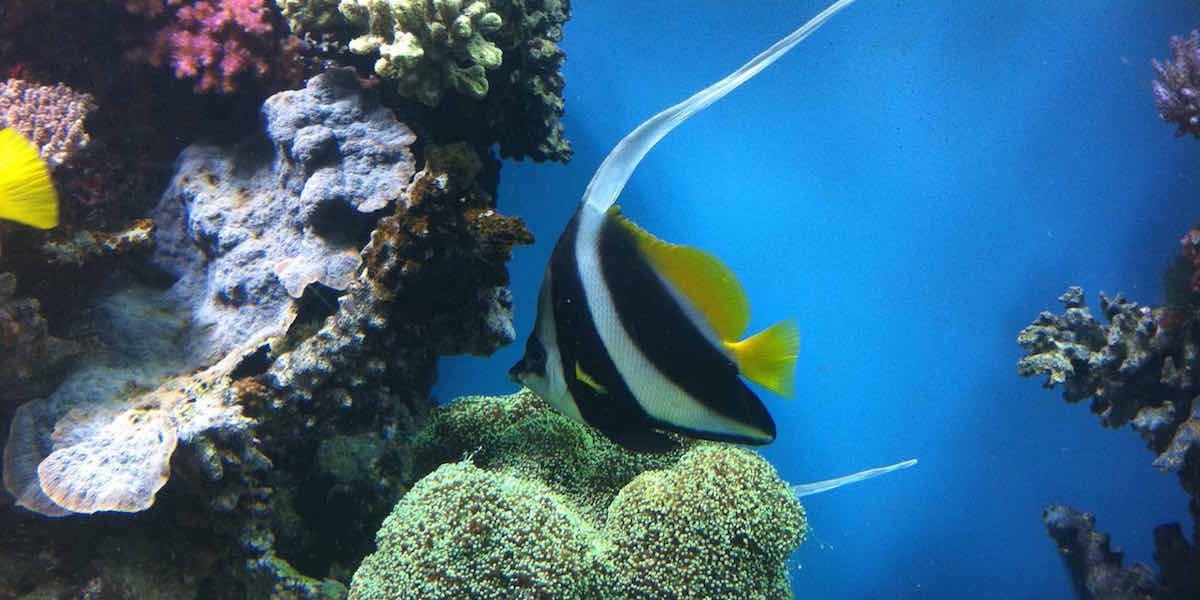
Microbiomes and emerging environmental HABs and pathogens
The fish model system is a promising one because fish depend heavily on their microbial-influenced innate immune system and readily lend themselves to experimental microcosms involving pathogens. My lab is studying how pathogens emerge in nature using Vibrio and Legionella as a model systems. We are employing genomics in combination with transcriptomics of Vibrio that colonize plastic and other substrates in the marine environment. Vibrio's ability to rapidly colonize the surface of plastic and be transported large distance in the ocean make it a good model for understanding its role as an emerging pathogen in aquaculture.
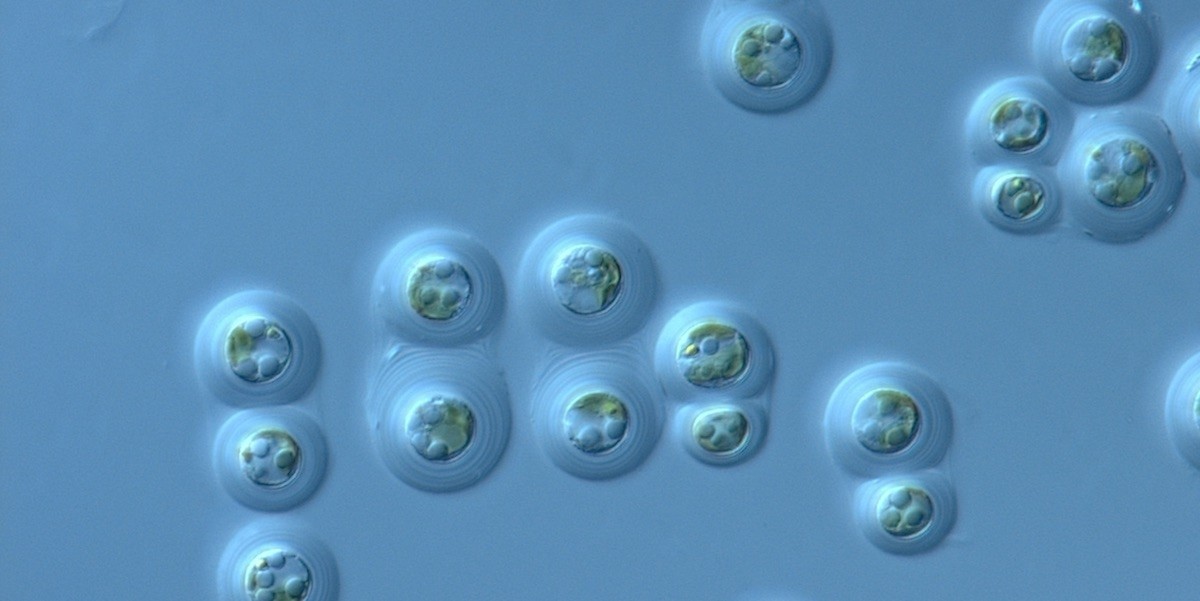
Algal DNA and lipid biomarkers in aquatic environments
This research theme connects my research interests and those of my organic geochemistry colleagues at NIOZ-Texel and Brown University in the US. We have been comparing laboratory paleotemperature proxies with in situ measurements and are developing new proxies for application to lacustrine and estuarine paleothermometry for quantifying climate history. As part of this research focus, my laboratory has contributed to documenting the diversity of alkenone-producing haptophytes at lacustrine sites across the world, performing laboratory manipulations to identify the environmental controls for production of certain classes of alkenones, and most recently, exploring biosynthetic pathways of alkenone production. The study of alkenone metabolic pathways is an area of on-going interest in my laboratory.
Linked news
Linked blogs
NIOZ publications
-
2023
Bos, R.P.; Kaul, D.; Zettler, E.R.; Hoffman, J.M.; Dupont, C.L.; Amaral-Zettler, L.; Mincer, T.J. (2023). Plastics select for distinct early colonizing microbial populations with reproducible traits across environmental gradients. Environ. Microbiol. early view. https://dx.doi.org/10.1111/1462-2920.16391Chaouni, B.; Idrissi Azami, A.; Raoui, S.; Amzazi, S.; Nejjari, C.; Bakkali, F.; Zaid, E.H.; Hamamouch, N.; Amaral-Zettler, L.A.; Ghazal, H. (2023). Spatio-temporal patterns of Synechococcus oligotypes in Moroccan lagoonal environments. NPG Scientific Reports 13(1). https://dx.doi.org/10.1038/s41598-022-27263-yManral, D.; Iovino, D.; Jaillon, O.; Masina, S.; Sarmento, H.; Iudicone, D.; Amaral-Zettler, L.; van Sebille, E. (2023). Computing marine plankton connectivity under thermal constraints. Front. Mar. Sci. 10: 1066050. https://dx.doi.org/10.3389/fmars.2023.1066050Mitrovic, D.; Hopmans, E.C.; Bale, N.J.; Richter, N.; Amaral-Zettler, L.; Baxter, A.J.; Peterse, F; Miguel Raposeiro, P.; Gonçalves, V.; Cristina Costa, A.; Schouten, S. (2023). Isoprenoidal GDGTs and GDDs associated with anoxic lacustrine environments. Org. Geochem. 178: 104582. https://dx.doi.org/10.1016/j.orggeochem.2023.104582
-
2022
Amaral-Zettler, L.A. (2022). Colonization of plastic marine debris: The known, the unknown, and the unknowable, in: Andrady, A.L. (Ed.) Plastics and the Ocean: Origin, characterization, fate, and impacts. pp. 301-316. https://doi.org/10.1002/9781119768432.ch10Beijer, N.R.M.; Dehaut, A.; Carlier, M.P.; Wolter, H.; Versteegen, R.M.; Pennings, J.L.A.; de la Fonteyne, L.; Niemann, H.; Janssen, H.M.; Timmermans, B.G.; Mennes, W.; Cassee, F.R.; Mengelers, M.J.B.; Amaral-Zettler, L.A.; Duflos, G.; Staal, Y.C.M. (2022). Relationship between particle properties and immunotoxicological effects of environmentally-sourced microplastics. Frontiers in water 4: 866732. https://dx.doi.org/10.3389/frwa.2022.866732Chaouni, B.; Idrissi Azami, A.; Essayeh, S.; Arrafiqui, E. H.; Bailal, A.; Raoui, S.; Amzazi, S.; Twaddle, A.; El Hamouti, C.; Boukhatem, N.; Timinouni, M.; El Otmani, F.; Chahboune, R.; Barrijal, S.; El Homani, A.; Nejjari, C.; Zaid, E. H.; Hamamouch, N.; Bakkali, F.; Amaral-Zettler, L.; Ghazal, H. (2022). Moroccan lagoon microbiomes. Water 14(11): 1715. https://dx.doi.org/10.3390/w14111715Cipolloni, O.-A.; Gigault, J.; Dassié, É.P.; Baudrimont, M.; Gourves, P.-Y.; Amaral-Zettler, L.; Pascal, P.-Y. (2022). Metals and metalloids concentrations in three genotypes of pelagic Sargassum from the Atlantic Ocean Basin-scale. Mar. Pollut. Bull. 178: 113564. https://dx.doi.org/10.1016/j.marpolbul.2022.113564Corbett, L.N.; Amaral-Zettler, L.A. (2022). Nanoplastics and the marine environment: The unseen majority?, in: Andrady, A.L. (Ed.) Plastics and the Ocean: Origin, characterization, fate, and impacts. pp. 389-428. https://doi.org/10.1002/9781119768432.ch14Fischer, R.; Lobelle, D.; Kooi, M.; Koelmans, A.; Onink, V.; Laufkötter, C.; Amaral-Zettler, L.; Yool, A.; van Sebille, E. (2022). Modelling submerged biofouled microplastics and their vertical trajectories. Biogeosciences 19(8): 2211-2234. https://dx.doi.org/10.5194/bg-19-2211-2022Polhill, L.; de Bruijn, R.; Amaral-Zettler, L.; Praetorius, A.; van Wezel, A. (2022). Daphnia magna's favorite snack: Biofouled plastics. Environ. Toxicol. Chem. 41(8): 1977-1981. https://dx.doi.org/10.1002/etc.5393Richter, N.; Russell, J.M.; Amaral-Zettler, L.; DeGroff, W.; Raposeiro, P.M.V.M.; Gonçalves, V.; de Boer, E.J.; Pla-Rabes, S.; Hernandez, A.; Benavente, M.; Ritter, C.; Sáez, A.; Bao, R.; Trigo, R.M.; Prego, R.; Giralt, S. (2022). Long-term hydroclimate variability in the sub-tropical North Atlantic and anthropogenic impacts on lake ecosystems: A case study from Flores Island, the Azores. Quat. Sci. Rev. 285: 107525. https://dx.doi.org/10.1016/j.quascirev.2022.107525Zhao, S.; Zettler, E.R.; Bos, R.P.; Lin, P.; Amaral-Zettler, L.; Mincer, T.J. (2022). Large quantities of small microplastics permeate the surface ocean to abyssal depths in the South Atlantic Gyre. Glob. Chang. Biol. 28(9): 2991-3006. https://dx.doi.org/10.1111/gcb.16089
-
2021
Amaral-Zettler, L.A. (2021). Latitudinal Diversity Gradients (LDGs) and macroalgal microbiomes: A chimera of biotic and abiotic effects? J. Phycol. 57(6): 1679-1680. https://dx.doi.org/10.1111/jpy.13208Amaral-Zettler, L.A.; Ballerini, T.; Zettler, E.R.; Abdala Asbun, A.; Adame, A.; Casotti, R.; Dumontet, B.; Donnarumma, V.; Engelmann, J.C.; Frère, L.; Mansui, J.; Philippon, M.; Pietrelli, L.; Sighicelli, M. (2021). Diversity and predicted inter- and intra-domain interactions in the Mediterranean Plastisphere. Environ. Pollut. 286: 117439. https://dx.doi.org/10.1016/j.envpol.2021.117439Amaral-Zettler, L.A.; Zettler, E.R.; Mincer, T.J. ; Klaassen, M.A.; Gallager, S.M. (2021). Biofouling impacts on polyethylene density and sinking in coastal waters: A macro/micro tipping point? Wat. Res. 201: 117289. https://doi.org/10.1016/j.watres.2021.117289de Vogel, F.A.; Schlundt, C.; Stote, R.E.; Ratto, J.A.; Amaral-Zettler, L.A. (2021). Comparative genomics of marine bacteria from a historically defined plastic biodegradation consortium with the capacity to biodegrade polyhydroxyalkanoates. Microorganisms 9: 186. https://dx.doi.org/10.3390/microorganisms9010186Pieper, C.; Magalhães Loureiro, C.; Law, K.L.; Amaral-Zettler, L.A.; Quintino, V.; Rodrigues, A.M.; Ventura, M.A.; Martins, A. (2021). Marine litter footprint in the Azores Islands: A climatological perspective. Sci. Total Environ. 761: 143310. https://doi.org/10.1016/j.scitotenv.2020.143310Raposeiro, P.M.; Hernández, A.; Pla-Rabes, S.; Gonçalves, V.; Bao, R.; Sáez, A.; Shanahan, T.; Benavente, M.; de Boer, E.J.; Richter, N.; Gordon, V.; Marques, H.; Sousa, P.M.; Souto, M.; Matias, M.G.; Aguiar, N.; Pereira, C.; Ritter, C.; Rubio, M.J.; Salcedo, M.; Vázquez-Loureiro, D.; Margalef, O.; Amaral-Zettler, L.A.; Costa, A.C.; Huang, Y.; van Leeuwen, J.F. N.; Masqué, P.; Prego, R.; Ruiz-Fernández, A.C.; Sanchez-Cabeza, J.-A.; Trigo, R.; Giralt, S. (2021). Climate change facilitated the early colonization of the Azores Archipelago during medieval times. Proc. Natl. Acad. Sci. U.S.A. 118(41): e2108236118. https://dx.doi.org/10.1073/pnas.2108236118van Sebille, E.; Zettler, E.; Wienders, N.; Amaral-Zettler, L.; Elipot, S.; Lumpkin, R. (2021). Dispersion of surface drifters in the Tropical Atlantic. Front. Mar. Sci. 7: 607426. https://doi.org/10.3389/fmars.2020.607426Zhao, S.; Zettler, E.R.; Amaral-Zettler, L.A.; Mincer, T.J. (2021). Microbial carrying capacity and carbon biomass of plastic marine debris. ISME J. 15: 67-77. https://doi.org/10.1038/s41396-020-00756-2
-
2020
Amaral-Zettler, L.A.; Zettler, E.R.; Mincer, T. (2020). Ecology of the plastisphere. Nat. Rev., Microbiol. 18: 139-151. https://dx.doi.org/10.1038/s41579-019-0308-0Grettenberger, C.L.; Mccauley Rench, R.L.; Gruen, D.S.; Mills, D.B.; Carney, C.; Brainard, J.; Hamasaki, H.; Ramirez, R.; Watanabe, Y.; Amaral-Zettler, L.A.; Ohmoto, H.; Macalady, J.L. (2020). Microbial population structure in a stratified, acidic pit lake in the Iberian Pyrite Belt. Geomicrobiol. J. 37(7): 623-634. https://dx.doi.org/10.1080/01490451.2020.1751748Liao, S.; Yao, Y.; Wang, L.; Wang, K.J.; Amaral-Zettler, L.; Longo, W.M.; Huang, Y. (2020). C41 methyl and C42 ethyl alkenones are biomarkers for Group II Isochrysidales. Org. Geochem. 147: 104081. https://dx.doi.org/10.1016/j.orggeochem.2020.104081Pieper, C.; Martins, A.; Zettler, E.R.; Loureiro, C.M.; Onink, V.; Heikkilä, A.; Epinoux, A.; Edson, E.; Donnarumma, V.; de Vogel, F.A.; Law, K.L.; Amaral-Zettler, L. (2020). INTO THE MED: Searching for microplastics from space to deep-sea, in: Cocca, M. et al. Proceedings of the 2nd International Conference on Microplastic Pollution in the Mediterranean Sea. Springer Water, : pp. 129-138. https://dx.doi.org/10.1007/978-3-030-45909-3_21Schlundt, C.; Mark Welch, J.L.; Knochel, A.M.; Zettler, E.R.; Amaral-Zettler, L.A. (2020). Spatial structure in the “Plastisphere”: Molecular resources for imaging microscopic communities on plastic marine debris. Mol. Ecol. Resour. 20(3): 620-634. https://dx.doi.org/10.1111/1755-0998.13119Theroux, S.; Huang, Y.; Toney, J.L.; Andersen, R.; Nyren, P.; Bohn, R.; Salacup, J.; Murphy, L.; Amaral-Zettler, L. (2020). Successional blooms of alkenone‐producing haptophytes in Lake George, North Dakota: Implications for continental paleoclimate reconstructions. Limnol. Oceanogr. 65(2): 413-425. https://dx.doi.org/10.1002/lno.11311Zettler, E.R.; Amaral-Zettler, L.A. (2020). The (Un)Natural History of the “Plastisphere,” A New Marine Ecosystem, in: Streit-Bianchi, M. et al. Mare Plasticum - The Plastic Sea. pp. 73-88. https://doi.org/10.1007/978-3-030-38945-1_4
-
2019
Kaiser, J.; Wang, K.J.; Rott, D.; Li, G.; Zheng, Y.; Amaral-Zettler, L.; Arz, H.W.; Huang, Y. (2019). Changes in long chain alkenone distributions and Isochrysidales groups along the Baltic Sea salinity gradient. Org. Geochem. 127: 92-103. https://dx.doi.org/10.1016/j.orggeochem.2018.11.012Pieper, C.; Amaral-Zettler, L.; Law, K.L.; Loureiro, C.M.; Martins, A. (2019). Application of Matrix Scoring Techniques to evaluate marine debris sources in the remote islands of the Azores Archipelago. Environ. Pollut. 249: 666-675. https://dx.doi.org/10.1016/j.envpol.2019.03.084Richter, N.; Longo, W.M.; George, S.; Shipunova, A.; Huang, Y.; Amaral-Zettler, L. (2019). Phylogenetic diversity in freshwater‐dwelling Isochrysidales haptophytes with implications for alkenone production. Geobiol. 17(3): 272-280. https://dx.doi.org/10.1111/gbi.12330Wang, K.J.; O'Donnell; Longo, W.M.; Amaral-Zettler, L.A.; Li, G.; Yao; Huang, Y. (2019). Group I alkenones and Isochrysidales in the world’s largest maar lakes and their potential paleoclimate applications. Org. Geochem. 138: 103924. https://dx.doi.org/10.1016/j.orggeochem.2019.103924
-
2018
Amaral-Zettler, L.; Schmidt, V.; Smith, K. (2018). Microbial community and potential pathogen shifts along an ornamental fish supply chain. Microorganisms 6(3): 91. https://doi.org/10.3390/microorganisms6030091
-
2017
De Tender, C.; Schlundt, C.; Devriese, L.; Mincer, T.J.; Zettler, E.R.; Amaral-Zettler, L.A. (2017). A review of microscopy and comparative molecular-based methods to characterize “Plastisphere” communities. Anal. Methods 9(14): 2132-2143. https://dx.doi.org/10.1039/c7ay00260bLuria, C.M.; Amaral-Zettler, L.A.; Ducklow, H.W.; Repeta, D.J.; Rhyne, A.L.; Rich, J.J. (2017). Seasonal Shifts in Bacterial Community Responses to Phytoplankton-Derived Dissolved Organic Matter in the Western Antarctic Peninsula. Front. Microbiol. 8: 2117. https://dx.doi.org/10.3389/fmicb.2017.02117Schmidt, V.; Gomez-Chiarri, M.; Roy, C.; Smith, K.; Amaral-Zettler, L. (2017). Subtle Microbiome Manipulation Using Probiotics Reduces Antibiotic-Associated Mortality in Fish. mSystems 2(6): e00133-17. https://dx.doi.org/10.1128/msystems.00133-17
